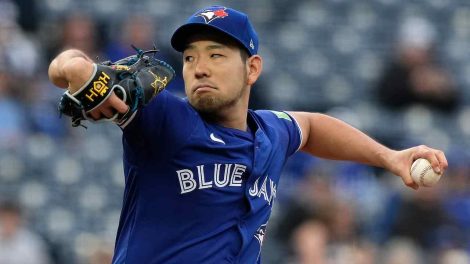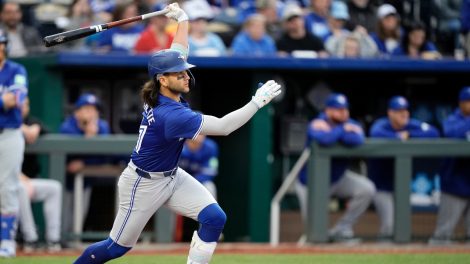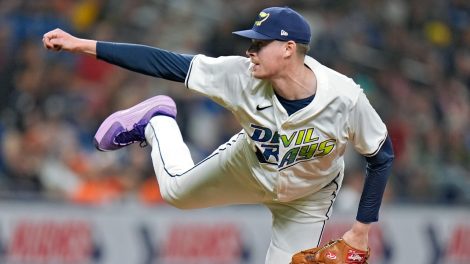ANAHEIM, Calif. – Justin Smoak accepts the vagaries of the strike zone and its interpretation by umpires as part of the job, and most of the time when he disagrees with a call he’ll quietly put his head down and walk back to the dugout.
Very rarely does the Toronto Blue Jays first baseman complain to the men behind the plate.
That’s what made his exchange with home-plate umpire Manny Gonzalez in Friday night’s 2-1 loss to the Los Angeles Angels so notable. After taking a very borderline inner-edge curveball for strike three (circled below) in the seventh inning with the tying run at second base, Smoak turned back and had an animated chat with Gonzalez, one that continued even as he kept walking to the dugout.
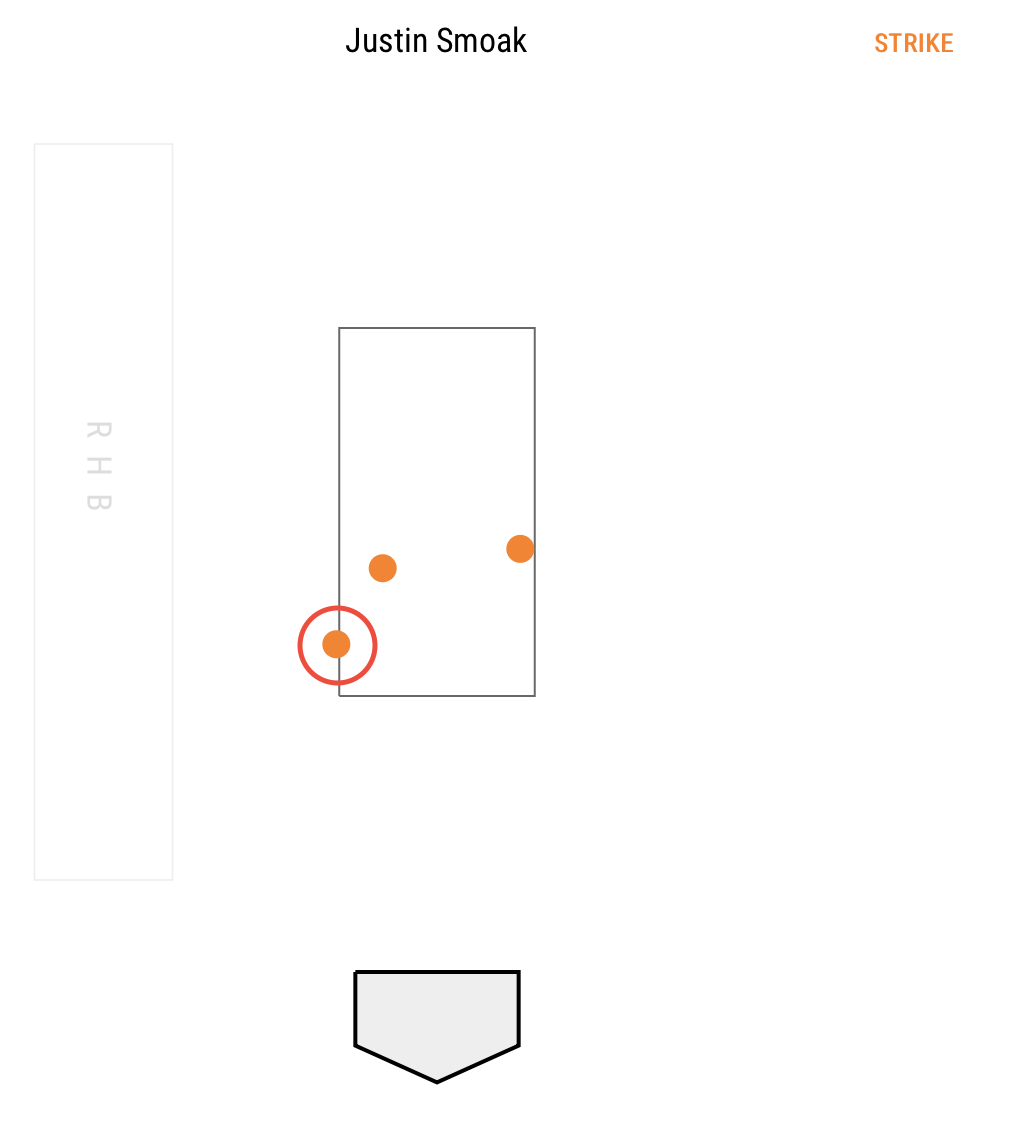
He didn’t get the run, but he made sure to drive his point home.
“I normally don’t get like that, and I felt like the at-bats prior were really bad and I was having to swing at pitches out of the zone just because that was the case,” says Smoak. “When you get in a big situation like that, tying run at second base, and then the same thing happens, it doesn’t make you happy. It gets to a point that you have to say something.”
Smoak’s displeasure with Gonzalez’s zone started in the first, when Andrew Heaney got a called third strike on a coin-flip curveball on the outer edge (circled). Then in the third, Smoak fell behind on another borderline curveball, this time down and in (circled), and proceeded to swing at three other curveballs in a similar area but further off the plate. He fouled two off and swung through the third for another strikeout.

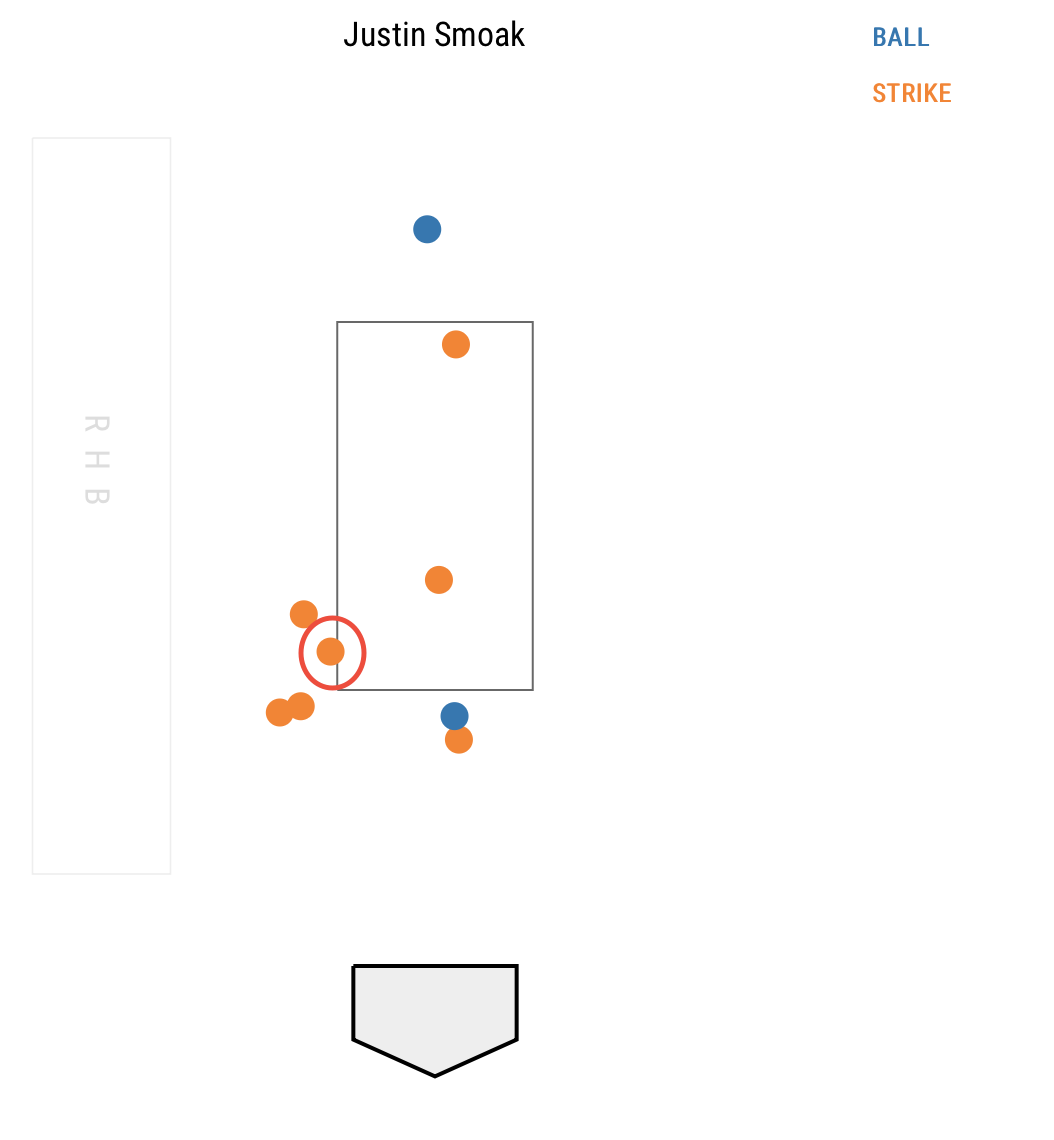
“I asked him the first at-bat, ‘Where did you have that one?’ All right, that’s fine. But at some point, it gets to where you have to let him know that they’re wrong, it’s not a strike, otherwise they’re going to keep doing it,” says Smoak. “I’m not just going to sit there and cuss him out. You just have to get your point across. They’re going to miss pitches, that’s part of it. But when you continually miss the same pitch that I felt was a ball, then you have to say something.”
Contributing to Smoak’s frustration was that the 0-for-4 Friday – he also grounded out in the fifth – extended a lengthy slide for the 31-year-old, leaving him just 6-for-52 for a slash line of .115/.230/.192 with two RBIs, eight walks and 16 strikeouts over 16 games from June 5-23.
Manager John Gibbons didn’t start him in Saturday’s 4-1 win as he tries to juggle playing time for the club’s five outfielders and Kendrys Morales, and Smoak responded Sunday with two doubles, a single and a walk in five plate appearances.
“It’s going to happen over the course of a season and it’s how you handle it,” says Smoak, “but I feel like the last three weeks have been a grind. You’ve just got to keep going, keep your head up and at some point it’s going to turn.”
Perhaps Sunday’s breakout as Gibbons dropped him to fifth in the lineup after a week of games in the two-hole marked the start of that, but Smoak is now better equipped to deal with those inevitable lulls.
[relatedlinks]
A key foundation of his emergence into an all-star last season was his ability to trust in his swing and his approach, and not rush to make changes through every dry spell. That was something he did regularly throughout his career before 2017, and he’s managed to not revert now.
“I feel like I’ve handled it better than I would have in the past,” says Smoak. “At times you want it so bad and want to do well that you try harder. You have to be able to take your foot off the gas a little bit and let it come to you, you can’t chase the result. Go out there and have good at-bats.”
Smoak has had plenty of those over the past couple years, accumulating enough plate appearances that this week he’ll trigger the first of three escalators on his $6-million club option for 2019. He’s at 936 combined plate appearances in 2017 and ’18 and once he reaches 950, the option increases to $7 million. It rises again to $7.5 million at 1,000 trips to the plate and to $8 million at 1,100.
The option has a buyout of $250,000, but barring an unforeseen set of extreme circumstances, the Blue Jays will clearly be bringing him back.
“That is what it is, I don’t think about it,” says Smoak. “I guess it says I had a lot of at-bats last year. My goal is to play every day and have a lot of at-bats this year, that’s what you want to do.”
[snippet id=3918627]
Either way, a contract that was initially panned has turned out to be a good one for both sides.
The Blue Jays have gotten more value from it than they initially expected while Smoak enjoyed stability and likely a dollar amount similar to what he would have garnered had he entered what proved to be challenging markets, particularly for first basemen, the past couple of years.
“No doubt,” says Smoak. “In the free agent market, you just never know now. There were some really, really good players last year that didn’t sign until late and some guys who had good years didn’t even sign until spring training or whenever it was. You can’t really control that, all you can do is control what you do on the field and go from there.”





